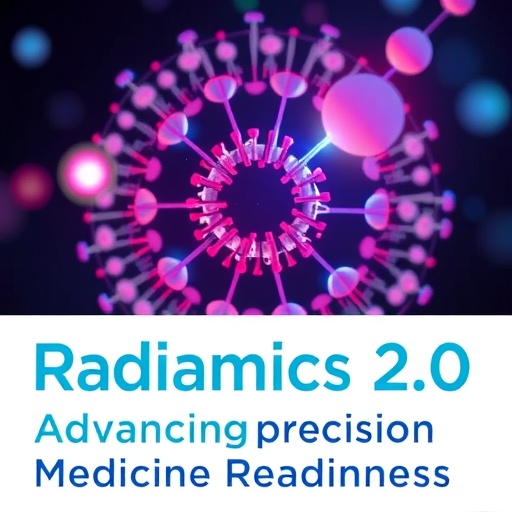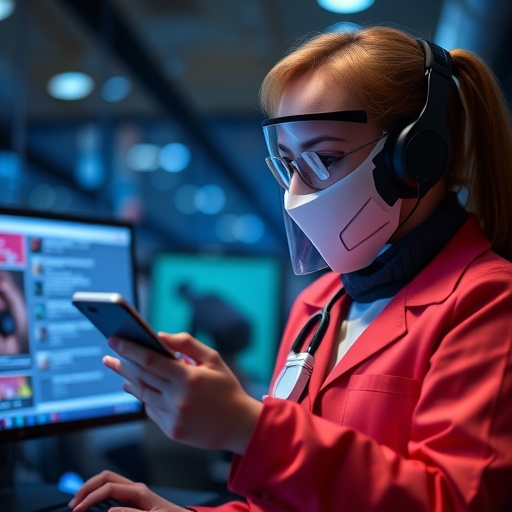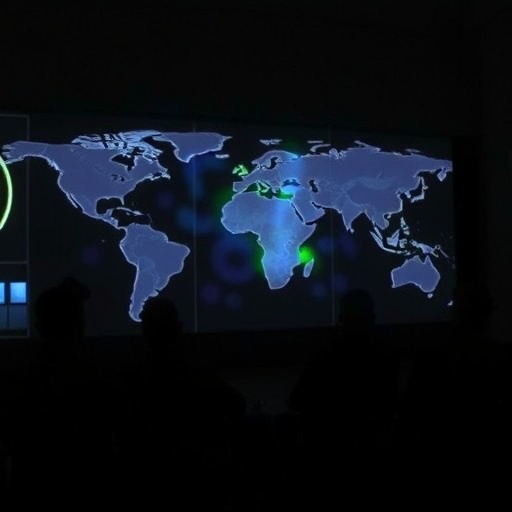
In the ever-evolving landscape of precision oncology, the integration of advanced computational tools with medical imaging is revolutionizing how clinicians approach diagnosis, prognosis, and therapy response assessment. Among these innovative methodologies, radiomics has emerged as a pioneering technique, harnessing the vast troves of imaging data to extract quantitative features that go far beyond the visual interpretation performed by human eyes. Radiomics is rapidly transforming traditional clinical workflows by providing objective, high-dimensional data that can uncover sub-visual patterns within medical images, thus offering profound insights into tumor phenotype, heterogeneity, and microenvironmental interactions. However, as the field flourishes, ensuring the quality and reproducibility of radiomics research has become paramount for its successful clinical adoption.
Addressing this critical need, a team of researchers has unveiled the Radiomics Quality Score 2.0 (RQS 2.0), an updated framework designed to rigorously evaluate the methodological robustness and clinical readiness of radiomics studies. This evolution from the original RQS reflects the community’s growing consensus that the standards for radiomics research must evolve in step with technological and analytical advances, as well as the heightened expectations for ethical considerations, transparency, and data harmonization. The updated score not only preserves the scientific meticulousness embedded in its predecessor but also incorporates novel dimensions such as fairness, explainability, and stringent quality control measures that are indispensable in the context of modern artificial intelligence-driven methodologies.
The significance of RQS 2.0 lies in its ability to foster consistency across radiomics investigations, enabling researchers to benchmark their studies systematically against a set of comprehensive criteria. This framework critically evaluates aspects ranging from image acquisition protocols, segmentation strategies, feature extraction reproducibility, to validation schemes that test the predictive power of radiomic signatures. Moreover, RQS 2.0 introduces the concept of radiomics readiness levels, which parallels technology readiness levels commonly used in engineering sectors to quantify stages of technology maturity. These readiness levels offer a structured approach to charting the translational trajectory of radiomics research—from foundational proof-of-concept studies to full-scale clinical integration.
Incorporation of radiomics readiness levels within RQS 2.0 represents a visionary step towards addressing one of the most persistent barriers in radiomics: the chasm between promising academic findings and real-world clinical applications. By defining nine incremental states of progress, this model encourages researchers to not only focus on methodological soundness but also on the pragmatic considerations essential for eventual implementation—whether regulatory approval, workflow integration, or clinician acceptance. This clarity in progression can galvanize more targeted efforts to surmount bottlenecks that have historically slowed the translation of radiomics-based tools into clinical decision-making paradigms.
A particularly compelling addition to RQS 2.0 is the emphasis on fairness and explainability—concepts of growing prominence in the domain of AI and machine learning. Fairness ensures that radiomics models are free from biases related to patient demographics, imaging equipment, or institutional practices, thus safeguarding equitable application across diverse populations. Explainability, on the other hand, addresses the ‘black box’ challenge by demanding that radiomic analyses provide interpretable outputs that clinicians can trust and understand. Together, these principles enhance the ethical and practical viability of radiomics, aligning it with the overarching goals of personalized medicine.
Quality control remains a cornerstone in the updated framework, reflecting the realization that radiomics is particularly vulnerable to variability introduced by differences in image acquisition parameters, reconstruction algorithms, and segmentation boundaries. RQS 2.0 calls for rigorous validation of stability and repeatability of extracted features, as well as standardized harmonization protocols to mitigate variability across multi-center data collection efforts. This meticulous approach is vital because the reliability of radiomic biomarkers hinges upon their reproducibility across diverse clinical environments—a prerequisite for regulatory endorsement and broad clinical adoption.
The strategic vision articulated through RQS 2.0 also underscores the importance of prospective clinical trials that robustly evaluate the predictive and prognostic utility of radiomic signatures. While retrospective studies have laid the groundwork for identifying potential imaging biomarkers, prospective validation is crucial to demonstrate clinical benefit, influence treatment decisions, and ultimately improve patient outcomes. In this regard, the updated score promotes adherence to transparent reporting standards and encourages inclusion of health economic evaluations, further reinforcing the translational potential of radiomics.
Radiomics, by enabling non-invasive characterization of oncologic phenotypes, possesses immense potential to complement established diagnostic modalities such as histopathology and molecular profiling. However, its maturation into a routine clinical tool requires an ecosystem that nurtures interdisciplinary collaboration between radiologists, oncologists, data scientists, and regulatory bodies. RQS 2.0 acts as a vital scaffold in this ecosystem by providing a harmonized language and benchmark for quality, thereby facilitating cross-disciplinary communication and cumulative knowledge building.
Looking beyond the immediate horizon, the conceptual framework advances the integration of multi-omics data with radiomic features, heralding a new era of holistic tumor characterization. The capacity to merge imaging phenotypes with genomic, proteomic, and metabolomic profiles could unlock unprecedented precision in predicting treatment response and disease trajectory. Furthermore, the embedding of artificial intelligence-driven algorithms within this framework promises to refine feature extraction, automate segmentation, and enable dynamic modeling of tumor heterogeneity over time, thereby propelling precision oncology into a truly personalized domain.
The anticipated clinical impact of widespread application of RQS 2.0-compliant radiomics research is transformative. With improved reproducibility and validation rigor, clinicians can confidently utilize radiomic models to stratify patients for tailored therapeutic regimens, monitor treatment response more accurately, and identify early resistance mechanisms. Such applications promise not only to enhance survival rates but also to reduce unnecessary toxicities by avoiding ineffective treatments, ultimately ushering in a new era of value-based cancer care.
Moreover, the framework’s call for transparent and reproducible research carries implications for regulatory science, facilitating clearer pathways for radiomics-based diagnostic tools to gain approval from agencies such as the FDA and EMA. This regulatory clarity could accelerate commercialization efforts and incentivize investment in radiomics technologies, thereby reinforcing the innovation cycle between academia, industry, and clinical practice.
In sum, Radiomics Quality Score 2.0 represents a milestone in the journey from exploratory imaging informatics research to clinically actionable tools in precision oncology. By integrating rigorous scientific principles with ethical imperatives and practical readiness, it addresses the multifaceted challenges impeding radiomics translation. This pivotal advance charts a pragmatic yet ambitious roadmap for the field, wherein radiomics is poised to become a cornerstone of personalized cancer care and precision medicine at large.
As radiomics continues to evolve alongside artificial intelligence and big data analytics, frameworks such as RQS 2.0 will be indispensable in ensuring that innovation is matched by reliability, fairness, and clinical relevance. Through the synergy of robust methodologies and translational focus, radiomics has the potential to redefine oncology imaging, transforming it from a primarily visual interpretation to a quantitatively empowered foundation for precision therapeutics.
In conclusion, the introduction of RQS 2.0 and its associated radiomics readiness levels marks a critical juncture in precision oncology. It not only raises the bar for radiomics research quality but also tightens the link between innovation and clinical utility. This comprehensive framework fosters transparency, reproducibility, and ethical integrity—ingredients essential for radiomics to fulfill its promise of improving patient outcomes through personalized medicine. The future of oncology imaging is quantitative, precise, and deeply integrative, and RQS 2.0 lights the path towards this transformative horizon.
Subject of Research: Radiomics Quality Assessment and Clinical Translation in Precision Oncology
Article Title: Radiomics Quality Score 2.0: towards radiomics readiness levels and clinical translation for personalized medicine.
Article References:
Lambin, P., Woodruff, H.C., Mali, S.A. et al. Radiomics Quality Score 2.0: towards radiomics readiness levels and clinical translation for personalized medicine. Nat Rev Clin Oncol (2025). https://doi.org/10.1038/s41571-025-01067-1
Image Credits: AI Generated
Tags: advancements in therapy response assessmentclinical adoption of radiomicsdata harmonization in healthcareethical considerations in medical imagingheterogeneity in tumorsmedical imaging and computational toolsmethodological robustness in radiomics researchobjective imaging data analysisradiomics in precision oncologyRadiomics Quality Score 2.0sub-visual patterns in medical imagestumor phenotype analysis




